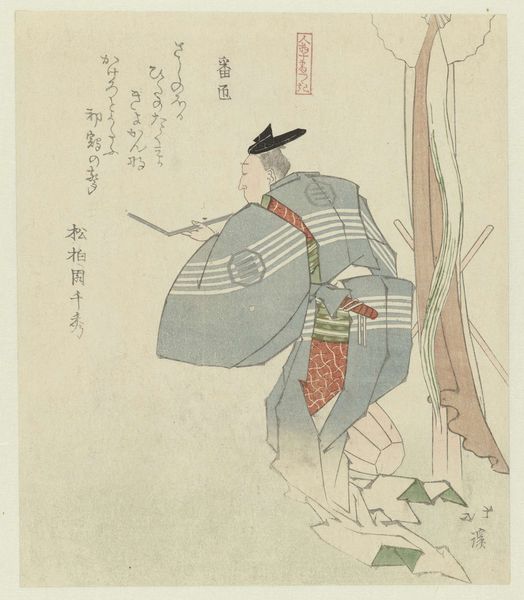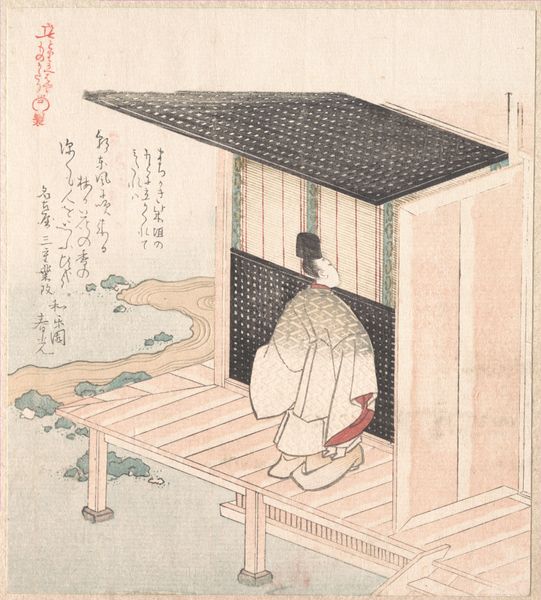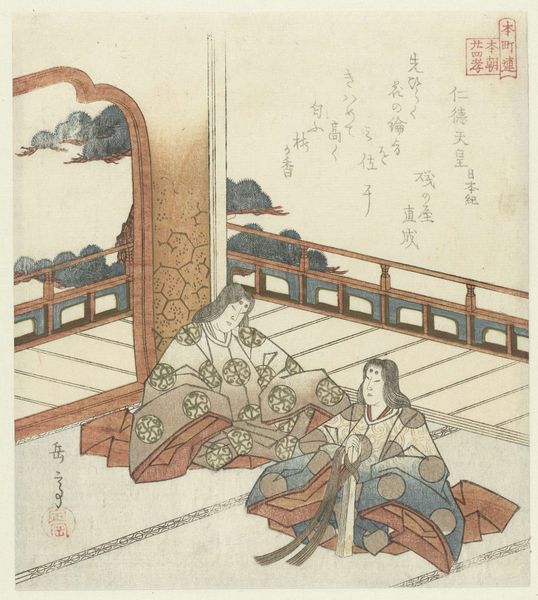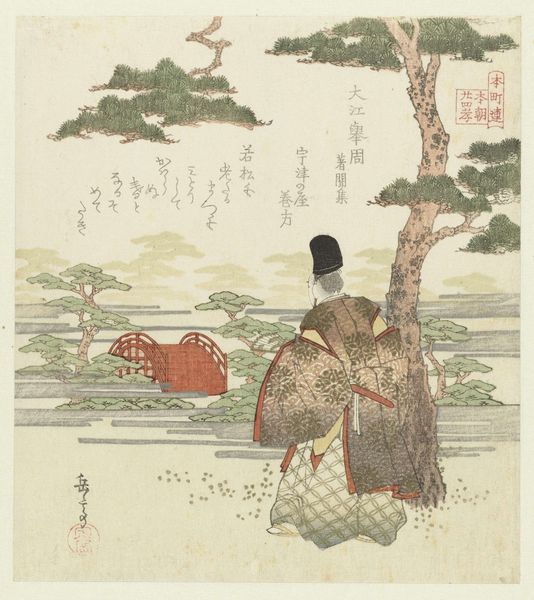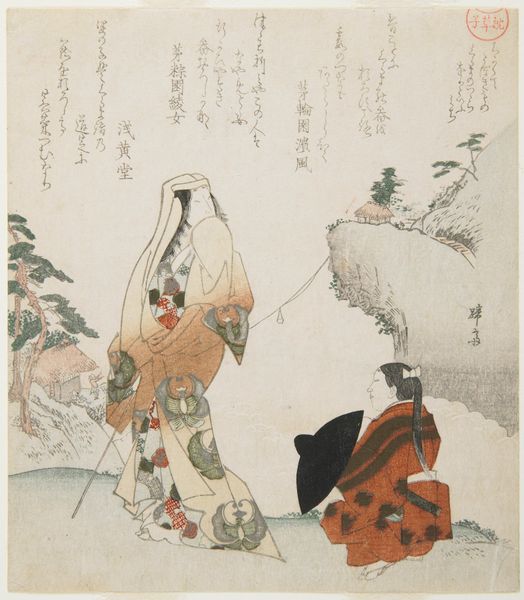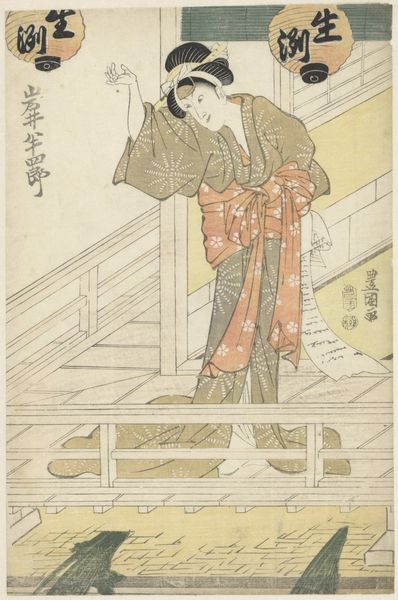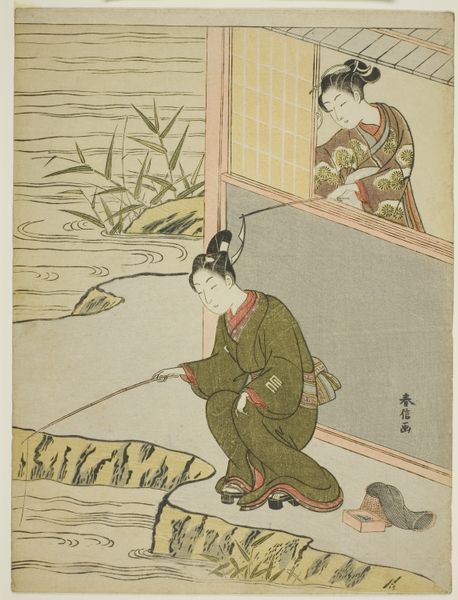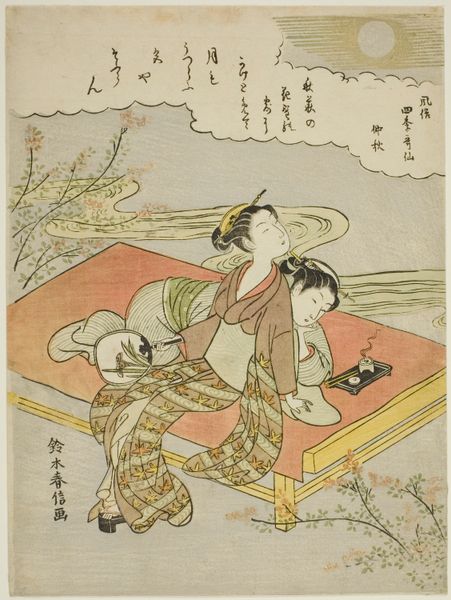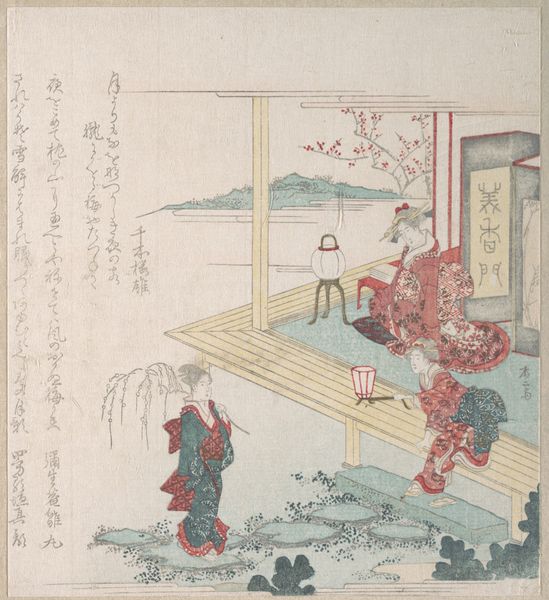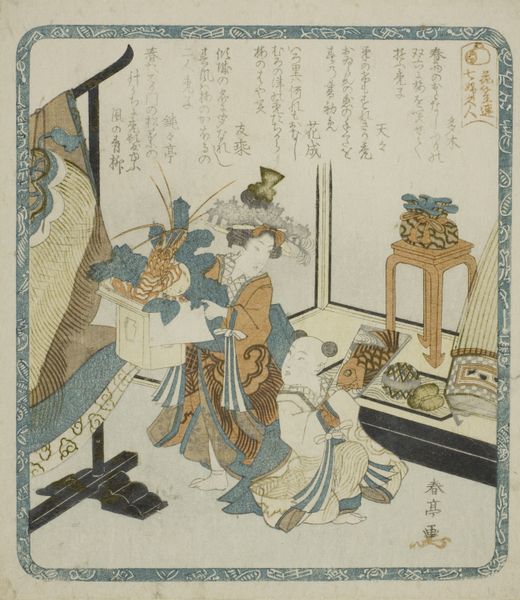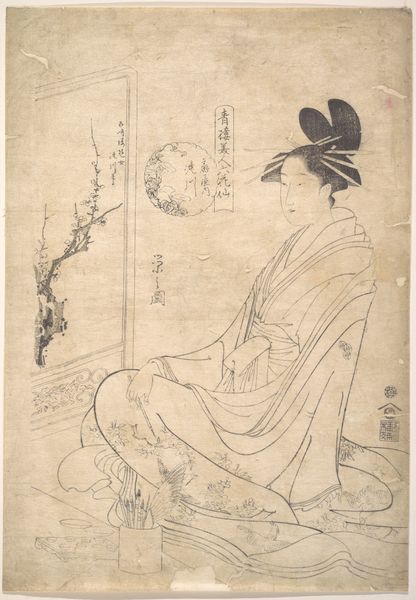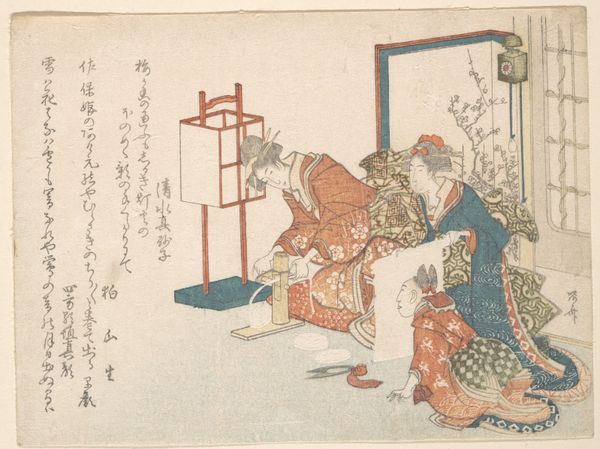![['A Chinese Looking Out of the Window', 'The ignorant seekers'] by Totoya Hokkei](/_next/image?url=https%3A%2F%2Fd2w8kbdekdi1gv.cloudfront.net%2FeyJidWNrZXQiOiAiYXJ0ZXJhLWltYWdlcy1idWNrZXQiLCAia2V5IjogImFydHdvcmtzL2RkMmQzY2Y5LWY1YjItNDJjMi05YTEwLTJjYzlkYjdjYzI1NS9kZDJkM2NmOS1mNWIyLTQyYzItOWExMC0yY2M5ZGI3Y2MyNTVfZnVsbC5qcGciLCAiZWRpdHMiOiB7InJlc2l6ZSI6IHsid2lkdGgiOiAxOTIwLCAiaGVpZ2h0IjogMTkyMCwgImZpdCI6ICJpbnNpZGUifX19&w=3840&q=75)
['A Chinese Looking Out of the Window', 'The ignorant seekers'] c. 1821
0:00
0:00
print, woodblock-print
#
portrait
# print
#
asian-art
#
landscape
#
ukiyo-e
#
woodblock-print
#
genre-painting
Dimensions: height 206 mm, width 183 mm
Copyright: Rijks Museum: Open Domain
Curator: This woodblock print, "A Chinese Looking Out of the Window," by Totoya Hokkei, dates from around 1821. I find it quite captivating; it pulls the viewer into a peaceful yet enigmatic moment. Editor: Enigmatic is right. My first impression is contemplative solitude. The figure’s back is turned, and he's gazing at this blurred, distant landscape. The colors are muted, which adds to that sense of quiet introspection. It almost feels…melancholy. Curator: It's a wonderful example of ukiyo-e, capturing a slice of everyday life. Notice how Hokkei balances the interior and exterior spaces, inviting us to consider the relationship between the individual and the world around them. The Chinese man in his elegant robes serves as a focal point. Editor: His robes are really something—that soft, peach hue is lovely against the stark whiteness of the landscape visible through the window. Those patterns! And what's the deal with the discarded items on the floor there: is that tea ceremony equipment? Curator: Exactly! These items on the floor, paired with the books, suggest the trappings of a scholar's existence. It invites a deeper look into Chinese artistic motifs and philosophical connections reflected in Hokkei's selection of objects, each of which bears cultural relevance that's evolved through time. It's more than just observation. The objects indicate what is being appreciated in life by the scholar and how such appreciation informs wisdom. Editor: So, he's literally contemplating his place in the world through art and literature? Is that why the landscape through the window seems almost like a dream, slightly out of focus, less detailed, maybe to contrast the real from ideal? Curator: The rendering of the landscape also adds layers of meaning. Landscapes of this type are quite typical. His blurred depiction might emphasize how even something idealized may bear the blemishes of imperfection. We perceive life in that mode quite often, as reality may bring great challenges or not meet expectation. In this picture, he finds his inspiration from imperfect beauty as shown from nature as perceived from an unglazed window. It mirrors the intellectual and emotional state. Editor: It’s amazing how much emotion is conveyed in what seems at first like such a simple composition. He uses objects we may often come across or see without thinking much of, and transforms this very act to represent philosophical contemplation. Now, it’s a painting. Hokkei has made something special of what is perceived to be everyday items. Curator: Precisely. Hokkei, like many ukiyo-e artists, had a keen eye for observing and interpreting culture in meaningful forms. Editor: I will think more on all that the next time I boil my kettle, read, or contemplate what is seen. Thanks, Curator! Curator: An insightful reflection, Editor. Thank you!
Comments
No comments
Be the first to comment and join the conversation on the ultimate creative platform.
